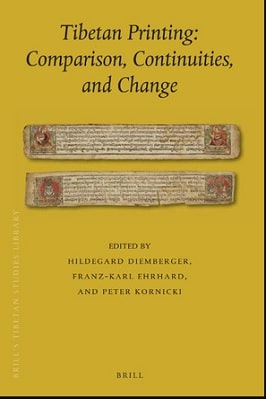
| Book Title | Tibetan Printing Comparisons Continuities And Change |
| Book Author | Hildegard Diemberger |
| Total Pages | 610 |
| Book Views | |
| Language | English |
| Book Download | PDF Direct Download Link |
| Get Hardcover | Click for Hard Similar Copy from Amazon |
Tibetan Printing: Comparisons, Continuities and Change
Edited by Hildegard Diemberger, Franz-Karl Ehrhard and Peter Kornicki
TIBETAN PRINTING: COMPARISONS, CONTINUITIES AND CHANGE
Introduction
Hildegard Diemberger, Franz-Karl Ehrhard and Peter Kornicki
Almost three decades have passed since the publication of Elizabeth Eisenstein’s seminal work The printing press as an agent of change: communications and cultural transformations in early modern Europe.
Her suggestion that printing technology promoted dissemination, standardization, and preservation of texts impacting the Renaissance, the Protestant Reformation and the Scientific Revolution has elicited intense debate up to the present day.
Different perspectives, new research and cross-cultural insights have since complicated the picture, but some of the questions she raised proved to be extremely fertile in opening new terrains of investigation.
Printing started to be a means of dissemination of texts in Tibet and in Europe at roughly the same time. In the 15th-century block printing or xylography, which had long been practised in China1 was adopted in Tibet, becoming an important technology for the multiplication of texts and images, alongside manuscript production,2 and remaining so until the 20th century.
Block printing in Tibetan script which had appeared before the end of the first millennium AD on the Silk Road alongside other Asian scripts (see van Schaik, Formigatti and Barrett in this volume), was used for the multiplication of Buddhist texts among the Tanguts in the 12th century and at the Yuan court in China in the 13th and the 14th centuries (see Schaeffer 2009).
Block printing played a part in Europe too, albeit one that is not always fully recognised (see Chartier 2007: 400; Chow 2007: 169–192), but it was the printing press that became dominant and triggered what was defined by Eisenstein as the ‘printing revolution’ (Eisenstein 1979).
This seminal study by Eisenstein provoked intense debates that have provided a more nuanced view of this momentous process: various scholars have pressed for interpretations that are not overly deterministic and have opened up a space for cross-cultural comparison that has brought together book cultures across the world (see for example Alcorn Baron, Lindquist, Shevlin 2007).
Tibetan materials have, unfortunately, so far been absent from this discussion. While the editors of this volume do not believe that the analytic framework used in the study of the
To read more about the Tibetan Printing Comparisons Continuities And Change book Click the download button below to get it for free
Report broken link
Support this Website
Click here to join our Telegram group for new Books